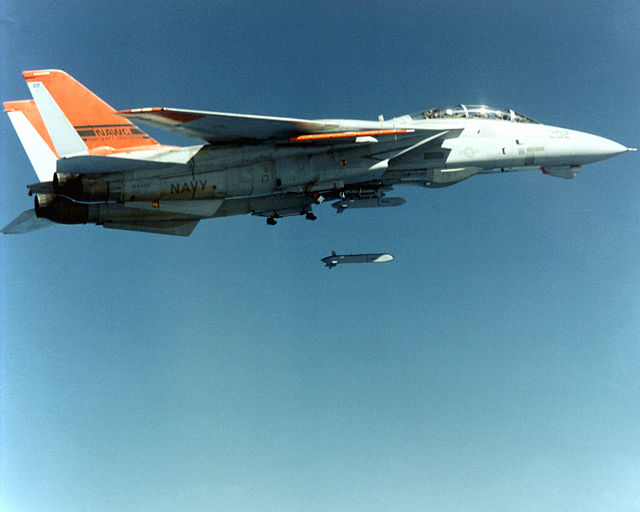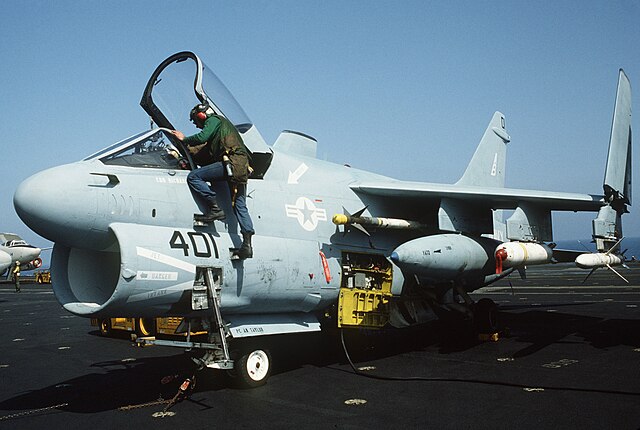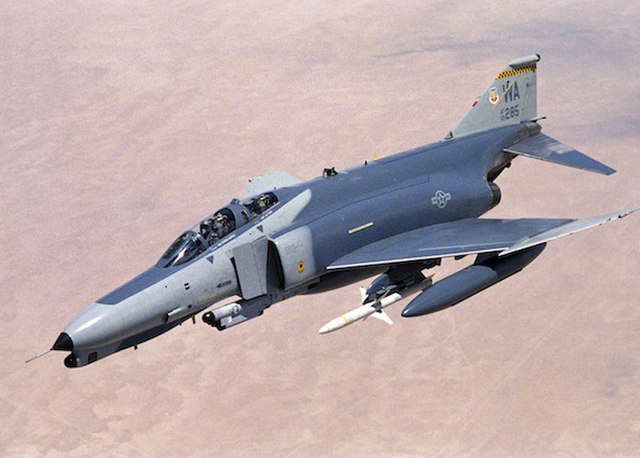The ADM-141A/B TALD was an American decoy missile originally built by Brunswick Corporation for the United States Air Force and the Israeli Air Force. Later it transitioned to joint US/Israeli manufacture with Israeli Military Industries Advanced Systems Division (IMI-ASD).
IMI TALD and IMI ITALD
F-14 launching a TALD
ADM-141 TALDs being loaded onto an A-7 Corsair II on 16 Jan 1991
Suppression of Enemy Air Defenses
Suppression of Enemy Air Defenses (SEAD, pronounced ), also known in the United States as "Wild Weasel" and (initially) "Iron Hand" operations, are military actions to suppress enemy surface-based air defenses, including not only surface-to-air missiles (SAMs) and anti-aircraft artillery (AAA) but also interrelated systems such as early-warning radar and command, control and communication (C3) functions, while also marking other targets to be destroyed by an air strike. Suppression can be accomplished both by physically destroying the systems or by disrupting and deceiving them through electronic warfare. In modern warfare, SEAD missions can constitute as much as 30% of all sorties launched in the first week of combat and continue at a reduced rate through the rest of a campaign. One quarter of American combat sorties in recent conflicts have been SEAD missions. Despite generally being associated with aircraft, SEAD missions may be performed using any means, including through actions by ground forces.

A US Navy EA-18G Growler, loaded with AGM-88 HARM anti-radiation missiles
An F-105G Thunderchief 'Wild Weasel' carrying AGM-45 and AGM-78 missiles taking off from Korat Royal Thai Air Force Base.
An A-7E from the USS America is armed with AGM-45 Shrike ARMs, in preparation of Operation El Dorado Canyon
The F-4G Wild Weasel played a major role during the war.







